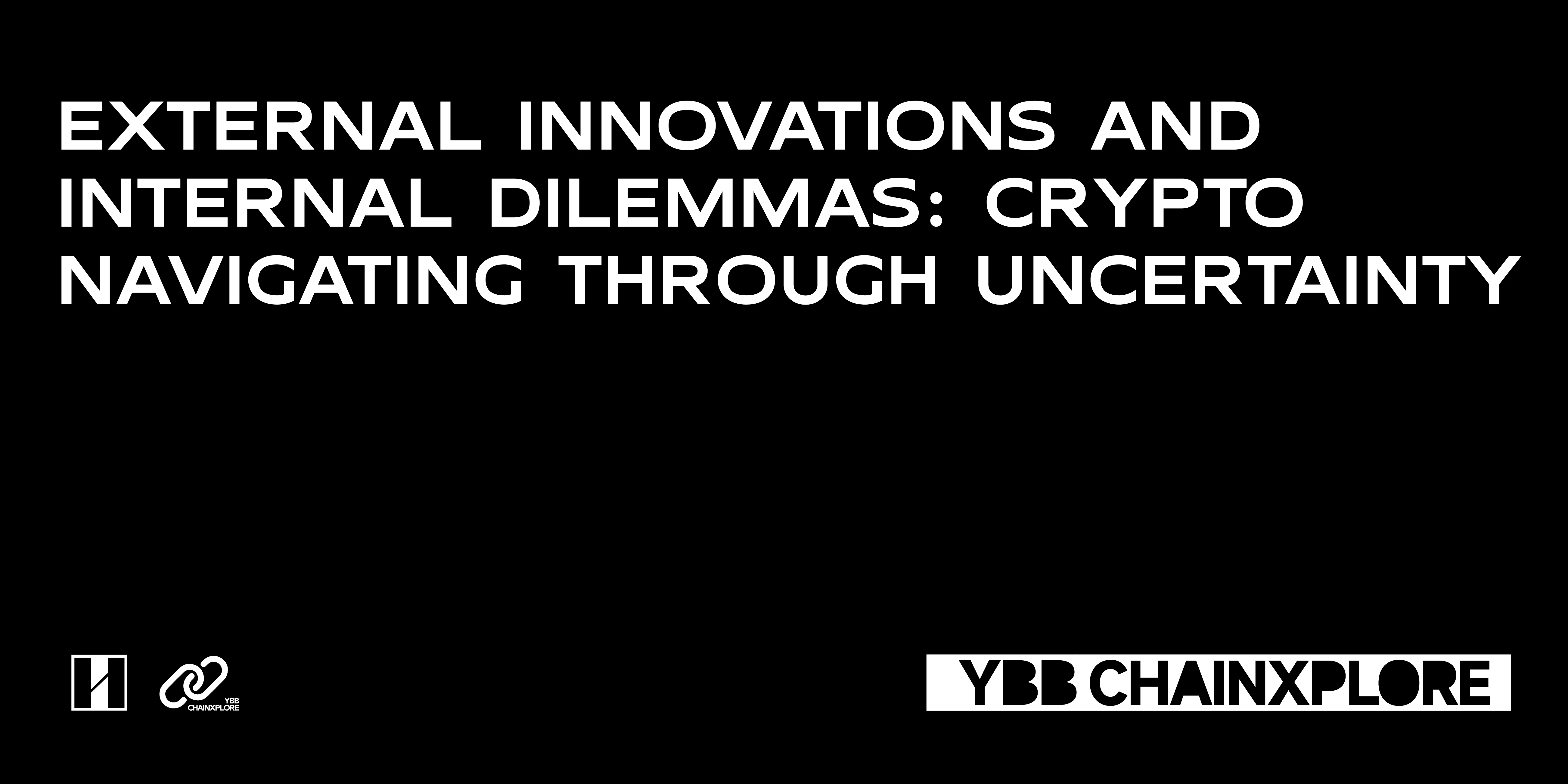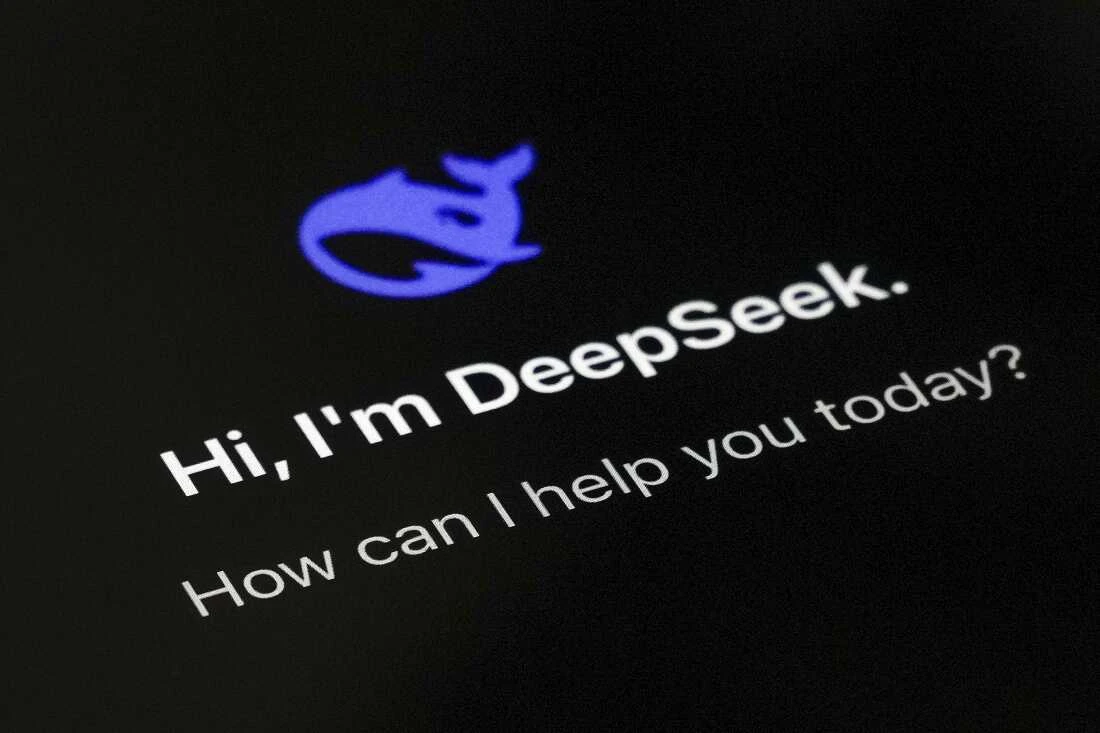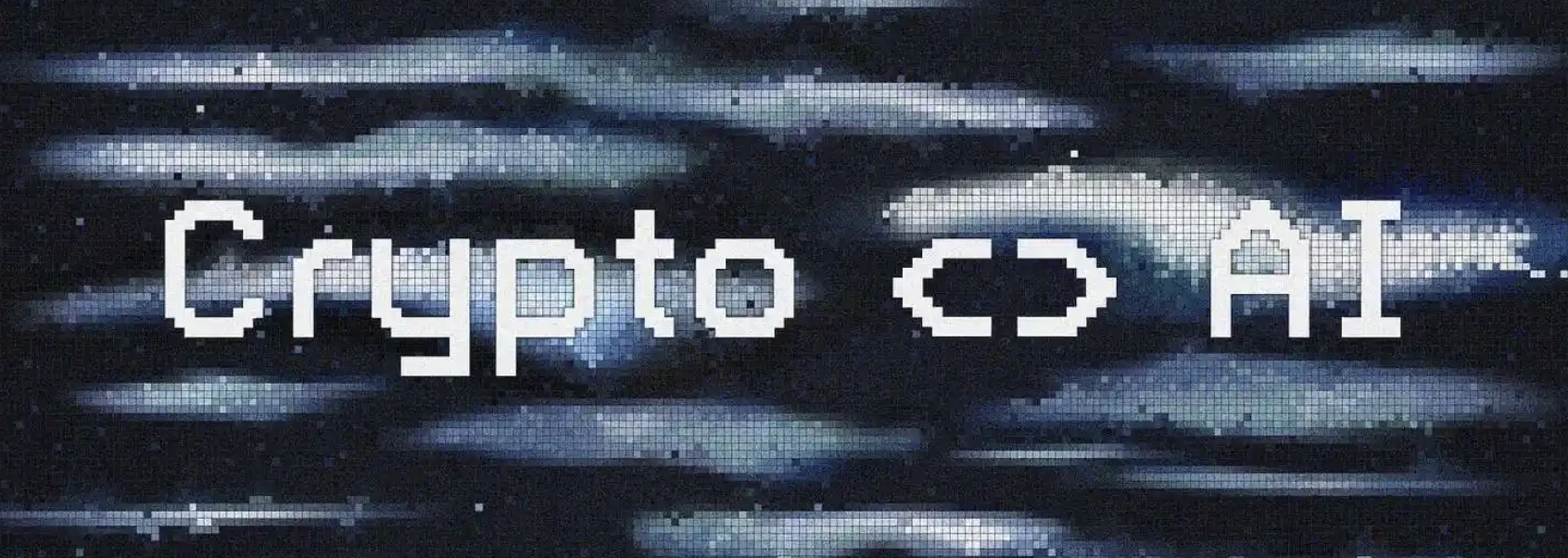Original Author: YBB Capital Researcher Zeke

I. AI is Inevitable, but Crypto x AI?
At the beginning of 2025, DeepSeek, developed by Huanshuo Quantitative, dropped a "nuclear bomb" on the AI circle. A Chinese AI model that only used 2048 NVIDIA H800 GPUs, with a training cost of $5.58 million (about one-tenth of Meta's), directly competed with GPT-4o and Llama 3.1 in benchmark tests like MMLU and GPQA, even slightly surpassing these top models from Silicon Valley in dimensions such as complex reasoning and Chinese semantic understanding. The U.S. has imposed a long-standing chip blockade on China, yet it faced dramatic deconstruction on DeepSeek's computing power sandbox. Chinese AI, confined within its own walls, has finally developed a technology path that is both suitable for national conditions and competitive with cutting-edge technologies, with a set of open-source, low-cost, and homogeneous combinations directly breaching the computing power moat of the U.S.

Chinese tech products, which are always slightly inferior to American ones in performance, often give me a stereotype of being cheap and plagiarized. I believe this is also the intuitive perception most people have of Chinese internet companies' products. However, this time DeepSeek is indeed different. I won't discuss whether the user experience is better than ChatGPT, which is a highly subjective feeling. Just from the tense reactions frequently mentioned in American politics and by tech giants, it is clear that China is no longer playing the role of a technology follower, and the global shock triggered by this is quite strong.
Although my wallet was the first to be affected, and to some extent, this is indeed a misjudgment of traditional AI development, I still want to share my views on the impact of DeepSeek on Crypto.
- NVIDIA is the most severely injured in this incident. First, the demand for AI computing power has been questioned, and second, NVIDIA's unified computing architecture "CUDA" has been bypassed. Friends familiar with the AI field should be no stranger to CUDA, which is one of the important cornerstones driving modern AI development. When large model developers use NVIDIA GPUs, they generally conduct research and development based on CUDA. Using CUDA has lower requirements for developers because it encapsulates some functions, allowing users to ignore many details, but it certainly sacrifices execution efficiency.
Since CUDA is a general-purpose programming framework, it leads to a loss of flexibility when training models. DeepSeek's approach is to directly use PTX (an intermediate instruction set framework designed by NVIDIA for GPUs) to bypass hardware limitations on training speed, shortening training time. While other models take 10 days to train, DeepSeek can complete it in 5 days. This also means that if DeepSeek intends to adapt to domestically produced GPUs in the future, it will be more adept in hardware adaptation, which could shake NVIDIA's position as the king of AI chips. (This paragraph is sourced from a report by Korea's Mirae Asset Securities analyzing DeepSeek's training process.)
In addition to the stock price drop having a strong impact on the crypto market, which is closely linked to U.S. stocks, I personally believe that in the long run, this is actually a good thing for decentralized computing power projects. First, more personal GPUs can also play a role in the future. Secondly, if DeepSeek's small and beautiful open-source model path can succeed, it will force many AI companies to open-source their projects, and the demand for computing power required for local deployment and secondary development will become increasingly strong. Looking at DeepSeek's hardware requirements, from the minimum parameter of 1.5B to the maximum parameter of 70B, there are opportunities to contribute excess computing power from the lowest NVIDIA GeForce GTX 1660 Super to the 40 series, 50 series, and even professional-grade A100 and H800 GPUs. This could be a turning point for decentralized computing power projects that currently have a relatively transparent presence and somewhat lackluster computing power supply (of course, provided that the latency is low enough).
- AI framework projects were the hottest emerging track in Crypto before DeepSeek dropped its "nuclear bomb," and it was the last track I wrote about before the Spring Festival. Now, under the bombardment of DeepSeek, they are all converging towards zero. After all, others can compete with OpenAI with a cost of less than $6 million, while our leading projects with FDV in the billions have yet to produce anything that can be called a practical AI Agent.

Since the inscription era, we have been almost obsessively pursuing assetization. The current level of tolerance for assetization in the crypto circle is quite open; completely off-chain AI framework projects only need an open-source GitHub code repository and a social account to issue tokens. The cost of "library-based tokens" is that one must be prepared to accept a dimensionality reduction attack from traditional AI companies one day.
In the golden age of AI development, traditional internet companies will not only have this one DeepSeek as a killer feature. The development of AI in the U.S.-China rivalry will only accelerate, and the key question is how Crypto can combine with various directions in the upstream and downstream of AI to highlight the advantages of decentralization without being taken down by an inexplicable AOE. Roughly dividing the Crypto x AI tech stack, we can categorize it into computing power layer, data layer, middleware layer, and application layer. In today's layered structure, I still feel the necessity of Crypto is absent. If we consider privacy and security from a future perspective, it may be a good angle, as AI Agents replacing or assisting human work has already become a reality today. How to ensure the privacy of work materials and personal data processed by AI may be a problem that traditional internet companies cannot solve. Furthermore, if an AI Agent has payment permissions, ensuring the security of wallets will also become an issue. Using blockchain as a compliance audit layer for AI models should be our main development direction in the future.
On the other hand, there is the question of where to direct incentives. Through incentives, we can not only foster computing power layers and model sharing but also teach AI how to interact with the virtual world. Unlike LLM training, which naturally possesses decades of global internet corpus knowledge, teaching AI how to act correctly requires humans to continuously label the correct positions. It is like teaching a visual model to recognize what is an animal and what is a car, and this cannot be accomplished simply by outsourcing to a group of college students. Fostering an AI Agent that can interact with the virtual world requires a complex decentralized network, teaching AI through countless individual humans, which is also a direction. I have discussed this in more detail in my past articles. What else can be done around incentives? Combining with DePin to teach agents to interact with reality, incentivizing AI to gain attention, incentivizing secondary creation about AI (for example, Bittensor's incentive model is a good example), and a token incentive mechanism that is automatically adjusted by AI (this stems from a question I raised in a previous article, which goes as follows: when a decentralized project becomes immensely large and enters the mainstream, how should it handle deflation and inflation? Should it rely on simple code rules, or listen to a few people or dozens of project parties? Or those key figures? Oh, right, we also have governance tokens. However, governance tokens are meaningless before solving the witch problem. Democratic voting can never reflect in governance proposals, after all, a16z can veto a large community's approval with just a few wallets, so what is the point of voting? Etc.)
We indeed cannot aggregate a group of high-end AI talents like traditional internet companies, nor can we purchase or rent a large-scale GPU cluster for training. Recreating a DeepSeek in the blockchain is naturally a pipe dream. The significance of Crypto lies in endowing another field with irreplaceable decentralized characteristics, just as we once granted financial freedom. AI is an inevitable narrative for humanity, but what role can Crypto play in it?
- This is the first time I mention Wordcoin in an article. This crypto utopia project initiated by Sam Altman seems somewhat absurd even now. Whether to record iris patterns means you need to make a choice between state surveillance and corporate surveillance, a situation reminiscent of being in The Matrix, choosing between the red pill and the blue pill.
However, the concept of universal basic income or inclusive finance may no longer be a joke at this stage. The ability to locally deploy models that rival cutting-edge ones has already allowed agents to appear in hospitals and government units in China. According to McKinsey's 2024 forecast report, 50% of jobs could be replaced by AI within the next six years. Future versions of Wordcoin may even be uniformly issued by the government. If this process continues to intensify, related tokens for inclusive finance may also emerge in large numbers and be repeatedly speculated upon. Considering a five to six-year window, this aligns with Trump's term, so will this crypto president issue a similar token? I think it is highly likely.
- According to recent statements by Elon Musk, AI may sweep the Nobel Prizes for the next 25 years. Therefore, I believe that raising funds through blockchain (even contributing computing power, storage, methods, and various resources) to promote AI research is more interesting and effective than the current DeSci. Perhaps I can call it Decentralized AI Science? That is DeAIS.
II. Meme Coin is No Longer Meme
In the past, when we analyzed Meme Coins, we discussed subculture, community consensus, and dissemination effects. Now, sitting in front of GMGN, I analyze conspiracy groups, head addresses, and developers' insider trading every day. When a CA is sent to various dog coin groups, it is the charge time. Today's memes are more absurd than ever; in the current stage of Pump.fun, don't even think about finding a token that allows you to sleep soundly; you might just go to the bathroom, and the K-line will plummet.
The continuous simplification of asset issuance thresholds and the high anonymity of blockchain have exacerbated this crazy casino culture. An unknown ragtag group can treat the crypto market as a cash machine. The evolution direction of memes has also become increasingly arbitrary; not only the aforementioned library-based tokens but any event, any person, or even any AI can become a token. Without a cultural core and without consensus, the so-called leading projects can be completely forgotten in just a few weeks. The celebrity coin craze that started with Trump lasted only a month; under a tweet from President Milei, hundreds of millions of funds flowed from Sol back to the outside world, and thus memes began to recede. President Milei's response was simple: he deleted the tweet and replied to everyone, "I was not informed."
The rapid development of AI has taken too much attention away from this world, making it difficult for the tech sector to progress. Retail investors who have abandoned value investing can only gamble in the "killing pig" schemes, hoping to be among the few lucky ones. The increasingly scarce liquidity is repeatedly extracted, reflected in the daily red K-lines in both Cex and Dex, as well as the disdain of traditional capital and outsiders towards altcoins.
III. Carving a Boat Cannot Retrieve a Lost Sword
The law of cycles has clearly failed, and all thoughts of "carving a boat to seek a sword" are futile. A bull run in BTC does not mean a bull run in altcoins, but a bear market in BTC certainly means a bear market in altcoins. Our understanding of altcoins must be reformed; the altcoin market can no longer be supported by just a white paper. A large project listed on a top Cex must be sufficiently mature to support its own token price.

Looking back at the growth of tokens over the past seven years, there were fewer than 2,000 tokens listed in the 2017 market, while the number of tokens listed in 2024 has approached 25,000 (data sourced from CoinGecko, including delisted tokens). The exponential expansion of token numbers is essentially an irreversible evolution from a low-entropy value system in blockchain to a high-entropy noise system. When each token in 2017 still carried the ideal of "disrupting the world," tokens in 2024 have evolved into chips for liquidity exit. The emergence of more tokens has not brought more innovation and implementation, but the high valuations of star projects have exponentially increased the demand for market liquidity.
As mentioned above, without recognition from the external world, retail investors cannot support the valuations of these projects. The listing of most altcoin projects often marks a historical peak, with Binance being the last stop. The crypto market needs a revolution; star projects should justify their massive financing. Bybit's trial of public financial disclosures for projects may be a solution. However, in my personal opinion, the market needs a deep bear phase to reshape the current valuation system and listing standards for altcoin projects.
IV. Confusion
I once saw a glimmer of hope on Ton, believing that the beginning of consumer-grade applications in Crypto had arrived, but this brief light faded away with the trend of Tap to Earn. Five years ago, the liquidity mining derived from DeFi allowed the crypto market to experience an incredibly glorious peak moment, and five years later, the only successful area we have is still just DeFi.
The topics I discuss with people in the circle are quite simple: Did you buy BTC? Did you short it? Can you give me a CA? Everyone is confused; we can no longer find a correct direction. Aside from BTC, buying any token does not allow for a peaceful sleep, which is the current state of the crypto market. "Diamond Hands" is not a compliment today; if you don't buy BTC, it feels more like a synonym for foolishness.
When I open various chain media on my phone, it feels like reading the New York Times and gossip media. Various phenomena reflect that the hopes of this circle are mostly pinned on policies and attention. From a VC's perspective, we may only invest in tool-type products in the future, with asset issuance platforms becoming shovel sellers and rent collectors, in order to survive.
Conclusion
Clearly, this is not the situation we wish to see. Although Crypto currently seems to be lost in a fog of directionlessness, the success of DeepSeek proves that innovation and reform remain the most effective paths to break through the deadlock. Crypto has the best policy environment, attention, funding, and solid infrastructure in history, and in the near future, many altcoin ETFs can inject liquidity back into the crypto market. We are clearly in the mainstream, yet trapped within our own walled city. The retreat of Meme Coins may hide a turning point; the future of humanity may not solely depend on AI.
免责声明:本文章仅代表作者个人观点,不代表本平台的立场和观点。本文章仅供信息分享,不构成对任何人的任何投资建议。用户与作者之间的任何争议,与本平台无关。如网页中刊载的文章或图片涉及侵权,请提供相关的权利证明和身份证明发送邮件到support@aicoin.com,本平台相关工作人员将会进行核查。



